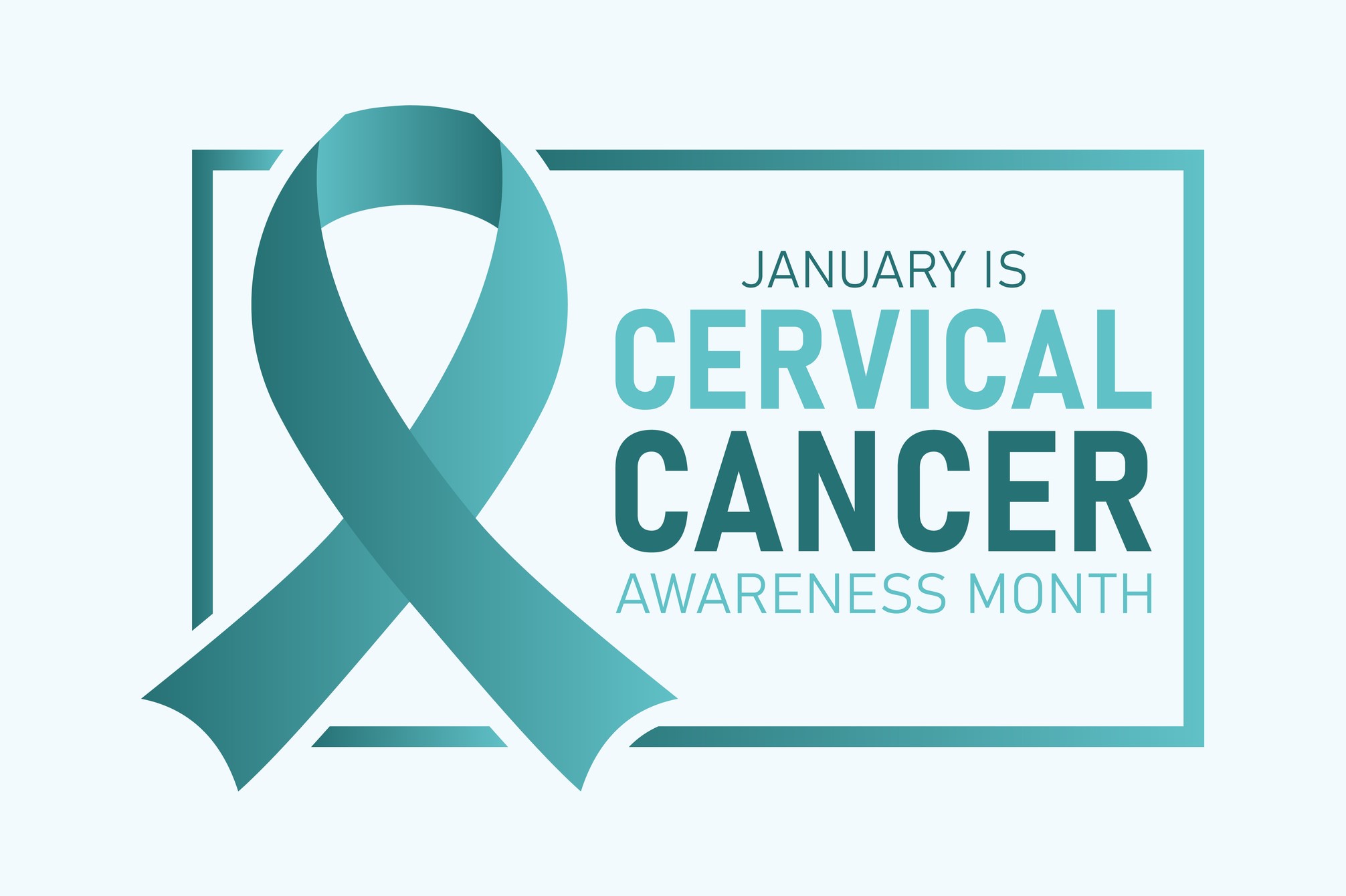
Cervical cancer is the fourth most common cancer for women. In 2020, it was estimated that there were 570,000 women diagnosed with cervical cancer worldwide, with over 310,000 women dying from this disease. Early cervical cancer typically doesn’t have any symptoms. By the time most women develop symptoms, such as irregular vaginal bleeding or vaginal discharge, the cervical cancer is usually diagnosed at an advanced stage, which has limited treatment options and is associated with significantly worse mortality. For these reasons, the global community has been stressing the importance prevention of this cancer.
Almost all cases of cervical cancer (99%) are caused by the human papillomavirus (HPV), an asymptomatic virus that is typically transmitted through sexual contact.1 HPV is incredibly common, with over 90% of sexually active adults acquiring the virus throughout their lifetime. While most will be able to clear the infection on their own, up to 20% of people will go on to have persistent HPV infections and become at risk for developing cervical cancer.2 That is why prevention, screening and early detection are so important. With HPV vaccinations, HPV screening and regular exams, we have the potential to eradicate this cancer.
A vaccine for the HPV virus first became available in 2006, and it has since been updated to protect against nine different strains of HPV (two strains that cause genital warts and seven strains that cause cancer). The vaccine is incredibly safe and over 97% effective in preventing HPV infection. However, when the vaccine was first introduced into the market, it was initially only FDA-approved for prevention and for individuals aged 9-26 years old. While this was an amazing step in preventing cervical cancer, it didn’t help two large, at-risk populations: (1) women older than 26 years old and (2) women who already are infected with HPV. Thankfully, in 2018, the FDA approved the use of HPV vaccination for individuals up to age 45. While this was a big step in helping individuals who were previously eligible for the vaccine, it still excludes individuals over the age of 46 years. The reality is that the HPV vaccine is a potentially life-saving vaccine, and there is no data to show that it is not effective once someone turns 46 years old. Therefore, in our practice, we offer the HPV vaccine to all women greater than 9 years old.
Another emerging topic is a growing body of evidence on the effectiveness of the HPV vaccine in women who have already contracted the HPV virus. While the HPV vaccine was not intended to be used as a therapeutic vaccine, a recent meta-analysis found a 64% risk reduction in the recurrence of severe cervical dysplasia in women treated with the HPV vaccine after they had already contracted the HPV virus.3 While this does not compare to the efficacy of the vaccine in the prophylactic setting, it does show that there is still a role for the vaccine in the adjuvant setting. Given the growing data about the uses of the HPV vaccine, providers should strongly consider discussing HPV vaccinations with all individuals, regardless of their age and history.
References:
- Burd, E. M. "Human Papillomavirus and Cervical Cancer." Clinical Microbiology Reviews 16, no. 1 (2003): 1-17. doi: 10.1128/CMR.16.1.1-17.2003. PMID: 12525422; PMCID: PMC145302.
- Huber, J., Mueller, A., Sailer, M., & Regidor, P. A. "Human Papillomavirus Persistence or Clearance After Infection in Reproductive Age. What is the Status? Review of the Literature and New Data of a Vaginal Gel Containing Silicate Dioxide, Citric Acid, and Selenite." Women's Health (London) 17 (2021): 17455065211020702. doi: 10.1177/17455065211020702. PMID: 34096424; PMCID: PMC8785287.
- Lichter, K., Krause, D., Xu, J., Tsai, S. H. L., Hage, C., Weston, E., Eke, A., & Levinson, K. "Adjuvant Human Papillomavirus Vaccine to Reduce Recurrent Cervical Dysplasia in Unvaccinated Women: A Systematic Review and Meta-analysis." Obstetrics & Gynecology 135, no. 5 (2020): 1070-1083. doi: 10.1097/AOG.0000000000003833. Erratum in: Obstet Gynecol 135, no. 6 (2020): 1489. PMID: 32282601.

